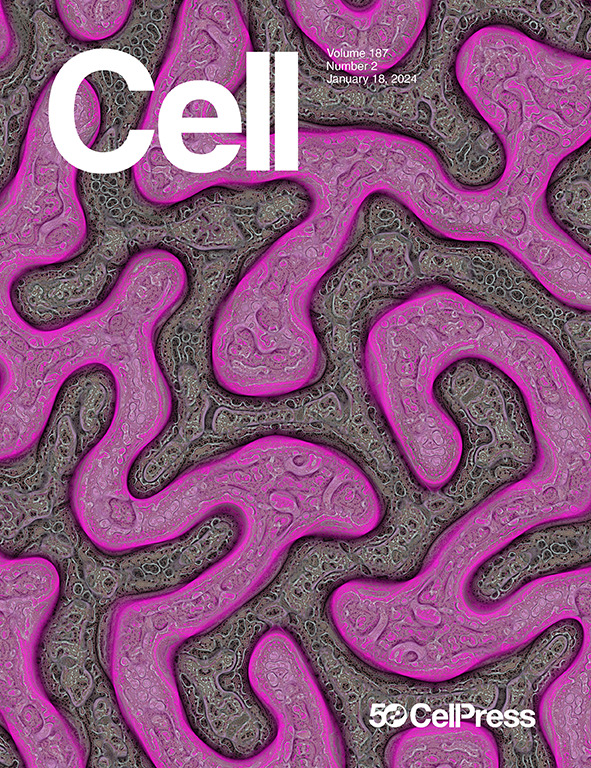Global analysis of protein turnover dynamics in single cells
IF 45.5
1区 生物学
Q1 BIOCHEMISTRY & MOLECULAR BIOLOGY
引用次数: 0
Abstract
Single-cell proteomics (SCPs) has advanced significantly, yet it remains largely unidimensional, focusing primarily on protein abundances. In this study, we employed a pulsed stable isotope labeling by amino acids in cell culture (pSILAC) approach to simultaneously analyze protein abundance and turnover in single cells (SC-pSILAC). Using a state-of-the-art SCP workflow, we demonstrated that two SILAC labels are detectable from ∼4,000 proteins in single HeLa cells recapitulating known biology. We performed a large-scale time-series SC-pSILAC analysis of undirected differentiation of human induced pluripotent stem cells (iPSCs) encompassing 6 sampling times over 2 months and analyzed >1,000 cells. Protein turnover dynamics highlighted differentiation-specific co-regulation of protein complexes with core histone turnover, discriminating dividing and non-dividing cells. Lastly, correlating cell diameter with the abundance of individual proteins showed that histones and some cell-cycle proteins do not scale with cell size. The SC-pSILAC method provides a multidimensional view of protein dynamics in single-cell biology.

求助全文
约1分钟内获得全文
求助全文
来源期刊

Cell
生物-生化与分子生物学
CiteScore
110.00
自引率
0.80%
发文量
396
审稿时长
2 months
期刊介绍:
Cells is an international, peer-reviewed, open access journal that focuses on cell biology, molecular biology, and biophysics. It is affiliated with several societies, including the Spanish Society for Biochemistry and Molecular Biology (SEBBM), Nordic Autophagy Society (NAS), Spanish Society of Hematology and Hemotherapy (SEHH), and Society for Regenerative Medicine (Russian Federation) (RPO).
The journal publishes research findings of significant importance in various areas of experimental biology, such as cell biology, molecular biology, neuroscience, immunology, virology, microbiology, cancer, human genetics, systems biology, signaling, and disease mechanisms and therapeutics. The primary criterion for considering papers is whether the results contribute to significant conceptual advances or raise thought-provoking questions and hypotheses related to interesting and important biological inquiries.
In addition to primary research articles presented in four formats, Cells also features review and opinion articles in its "leading edge" section, discussing recent research advancements and topics of interest to its wide readership.
 求助内容:
求助内容: 应助结果提醒方式:
应助结果提醒方式:


